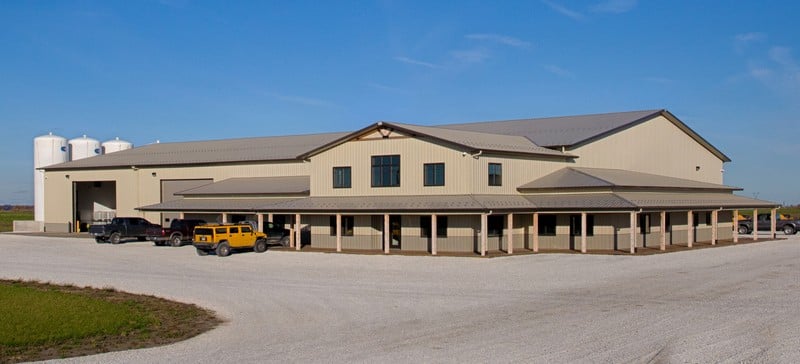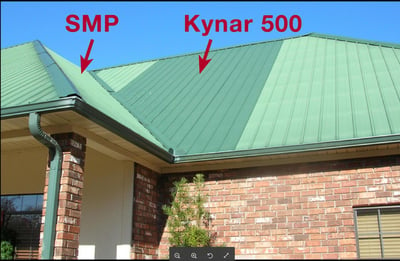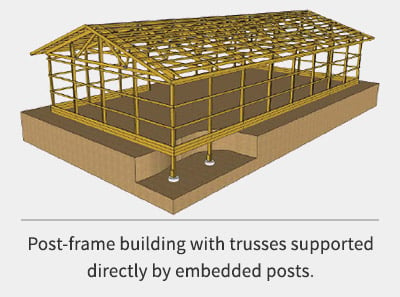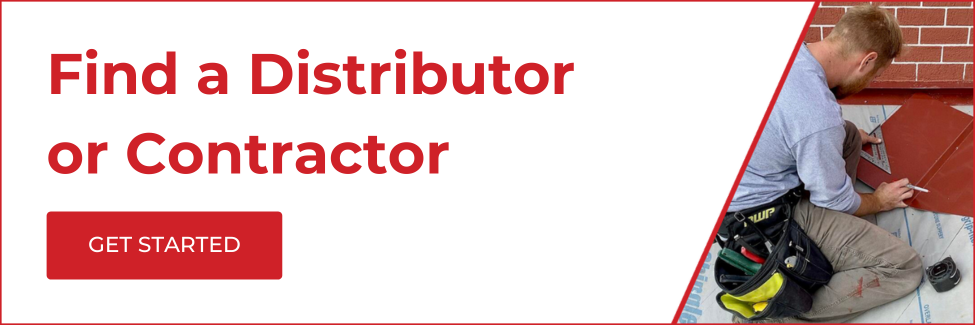If you’ve ever driven through a rural area, you’ve likely noticed various agricultural machine sheds with metal roofs. While their beginnings have humble roots, today's agricultural metal building uses range from the traditional purpose of machinery storage to more extravagant uses such as wineries, workshops, daycare, and mini-storage facilities.
Applications of agricultural metal roofing are limitless.

Let’s explore basic construction methods, critical buying criteria, and a few frequently asked questions to better understand this market segment.
Post-Frame Construction
Most agricultural metal structures (also called pole barns) use a post-frame construction method. Post-frame construction is different than traditional stick-frame construction because post-frame construction relies on large posts and trusses to transfer the structural load into the ground rather than wood studs and trusses.
In stick-built construction, studs and trusses are located every 16” to 24” on center for structural support. Conversely, post frame buildings are constructed 8’ on center with roof trusses secured to foundational posts. This difference allows for the creation of vast, open interior spaces.
Next, let’s take a look at a few things to consider before making your final product selections.
Critical Buying Criteria
Before purchasing metal roofing products, consider the substrate, panel thickness, and paint system.
Substrate. A substrate is the base material in metal roofing and siding. Galvanized and Galvalume are the two basic types. Galvanized substrates are coated with zinc alloy, while the coating on GalvalumeⓇ substrates is zinc plus aluminum. Building use is a significant factor when choosing between the two substrate types.
Galvanized substrates offer better performance in animal confinement situations, and Galvalume is typically the preferred substrate for all other applications. If you’d like to talk about the use of your specific building, contact us. We’re happy to help you determine which might be the best substrate for you.
When considering a galvanized substrate, it’s essential to understand the different thicknesses available for the zinc coating. For example, G60 has .60 ounces of zinc per square foot, while G100 products offer 1.0 ounces per square foot.
While that difference may seem minimal, the difference in expected performance is substantial and directly impacts how long you can expect the panel to last. To learn more about substrate options and performance, check this out.
Steel Gauge. Gauge is how metal panel thickness is measured. The gauge of steel panels affects how far the panels can safely span between supports how they react to forces like high winds, hail, and even snow.
Steel gauge equivalents work in reverse order, so a higher number represents a lighter steel thickness. Standard metal panel gauges span from 29 gauge to 18 gauge, with 29 Gauge being the most common thickness for agricultural metal roofing applications. 26 gauge steel is also common for these project types based on geographic location and other building-specific parameters.
Paint System. Much like a three-legged stool doesn’t work with only two legs, the paint system on agricultural metal roofing is the third critical component. Commonly available paint systems include Silicone, Silicone Modified Polyester (SMP), and Polyvinylidene Floride (PVDF). They represent a good, better, best option, as shown in the graphic below.

SMP paint systems have long been the workhorse for post-frame applications and consequently the paint system that most panel manufacturers offer. While McElroy Metal offers Silicone Modified Polyester (SMP) paint systems, we’re also proud to be one of the few manufacturers to offer PVDF (Kynar 500) paint as a standard on our post-frame metal roofing and siding products.

PVDF systems offer unparalleled performance against fade and chalk. The image below provides a great example of why that might matter to you. In the photo, PVDF (Kynar 500) and Silicone-Modified Polyester (SMP) panels were installed on this home in Louisiana.
On day one, the colors were an identical shade of green. This photo, taken only eight years later, tells a powerful story of the differences between the paint systems as it highlights both chalk and fade of the SMP paint system.
There is no visible fade or chalking on the darker (PVDF) panels. To learn more about PVDF, check this out.
Do you have questions about metal roofing? Check out our Metal Roofing FAQ.
Agricultural metal roofing applications (and product options!) are ever-changing. To learn more, check out this page on our website or use our Find a Contractor tool to locate a professional near you.
About McElroy Metal
Since 1963, McElroy Metal has served the construction industry with quality products and excellent customer service. The employee-owned components manufacturer is headquartered in Bossier City, La., and has 14 manufacturing facilities across the United States. Quality, service and performance have been the cornerstone of McElroy Metal’s business philosophy and have contributed to the success of the company through the years. As a preferred service provider, these values will continue to be at the forefront of McElroy Metal’s model along with a strong focus on the customer.





.png?width=767&name=Metal%20Roof%20Condensation,%20Insulation,%20and%20Vapor%20Barriers%20(1).png)




Comments on this article:
Scroll down to the bottom to submit a comment and join the conversation. Need help or have a question? Please contact us. Looking for a distributor or contractor? Please click here to get started.